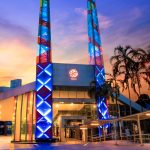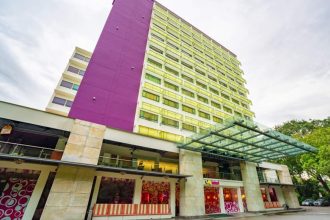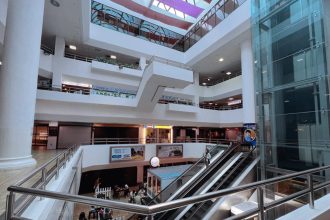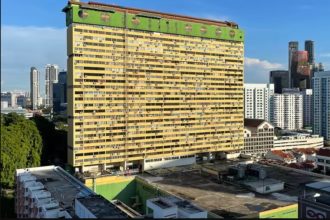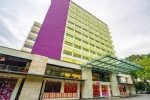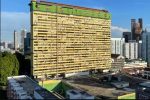Key takeaway
The Singapore Oceanarium (formerly S.E.A. Aquarium) is a grand maritime journey under one roof, or rather, under very deep water. Visitors can walk through 22 immersive zones, witness a massive open‑ocean habitat framed by a gigantic viewing panel, and engage in conservation‑driven storytelling about marine life’s past, present, and future.
If you’re curious about what it feels like to step inside a living sea, the Singapore Oceanarium delivers. Previously known as the S.E.A. Aquarium, this reimagined attraction at Resorts World Sentosa doesn’t just show marine creatures; it invites you into their world. For those comparing immersive experiences, the failed theme park of Tang Dynasty City offers a striking contrast in visitor engagement and longevity.
A brief history of the Oceanarium
The original S.E.A. Aquarium opened on 22 November 2012 in Resorts World Sentosa. It was part of the Marine Life Park, which spans 8 hectares. Originally, it had 10 themed zones and 49 habitats.
On 30 April 2025, the aquarium temporarily closed for a major renovation and rebranding. It officially reopened as the Singapore Oceanarium on 24 July 2025. The refreshed facility now spans 22 immersive zones, telling rich stories about marine biodiversity, conservation, and even ocean history.
The heart of the journey: what visitors actually see
This section highlights the main experiences visitors encounter inside the Singapore Oceanarium. From themed zones representing different marine habitats to interactive exhibits and spectacular viewing tanks, the Oceanarium guides guests through a layered, immersive exploration of the ocean.
Immersive zones that spark wonder
The new Singapore Oceanarium is arranged into 22 zones. These range from habitats inspired by Singapore’s own coastline to deep-ocean galleries, prehistoric seas, and laboratories that look to the future. In one zone called “Singapore’s Coast,” visitors can peek into mangrove-inspired tanks and touch local sea creatures like skunk cleaner shrimps. Another, “Ancient Waters,” features animatronic reconstructions of extinct sea monsters like the Dunkleosteus, giants from Earth’s distant past.
Visitors often compare the Oceanarium’s immersive approach with other Singapore attractions. The Science Centre Singapore delivers interactive exhibits, offering a different style of learning and engagement for families.
The Open Ocean tank, an unforgettable centrepiece
Both in its former life and now, the Oceanarium’s highlight is its Open Ocean habitat. When it opened in 2012, it held over 18 million litres of water and housed around 50,000 animals. Its viewing panel was a world record, 36 metres wide, 8.3 metres tall, and 0.7 metres thick.
In the reimagined space, this massive window remains, now framing the movements of over 120 species, including manta rays, sharks, and large groupers. Watching through it feels almost like sitting on the ocean floor and letting schools of fish swirl past you in slow motion.
Feeding Shows That Engage Visitors
The Singapore Oceanarium schedules regular feeding sessions for sharks, rays, and tropical fish. During these live demonstrations, marine biologists explain dietary habits, behavior patterns, and the role each species plays in its ecosystem. Visitors can observe how animals interact with their environment while learning conservation messages in real time. These shows also highlight the technical expertise behind maintaining large-scale habitats, including water quality management and habitat enrichment. For families, the feeding demonstrations become both educational and entertaining, making marine science tangible. Guests often plan their visit around these sessions to ensure they witness the action and gain deeper insight into ocean life.
Interactive Learning Zones for Kids and Adults
Interactive exhibits encourage hands-on learning for visitors of all ages. Touch pools allow guests to feel starfish, sea cucumbers, and shrimps, while digital displays teach about ocean currents and marine biodiversity. Augmented reality installations let visitors “swim” alongside extinct or endangered species, offering a unique perspective that static displays cannot replicate. The zones use gamification to motivate learning, including quizzes, scavenger hunts, and role-playing activities, as marine conservationists. These interactive experiences bridge science and storytelling, engaging curious minds. Families, school groups, and solo travelers find that the Oceanarium turns passive observation into active participation, reinforcing lessons about marine ecosystems and human impact.
How to experience the journey in real life
- Start early. The Oceanarium is popular, so arriving shortly after opening helps you beat the crowd.
- Follow a path. To make the most of the 22 zones, use the recommended visitor route; this way, you move from shallow reefs to deep seas to themed labs without backtracking.
- Use the mobile app. The Oceanarium app unlocks augmented reality experiences, like standing face‑to‑face with extinct prehistoric sea creatures.
- Don’t skip the touch‑pools. In zones inspired by Singapore’s coast, you can gently interact with small sea creatures like shrimps and sea stars.
- Pause at the Open Ocean window. Give yourself time: sit, watch, listen, and feel how the light plays across the panel; it’s the heart of the experience.
- Reflect on the conservation exhibits. At the end of your visit, spend time at the galleries that talk about restoration, future oceans, and how visitors can help protect marine habitats.
Architecture and Design Behind the Scenes
The Singapore Oceanarium’s design emphasizes both aesthetics and functionality. Its Open Ocean tank features a massive acrylic panel engineered to withstand millions of litres of water while providing clear visibility. Pathways and viewing galleries are carefully designed to guide visitor flow without disturbing the animals. Lighting mimics natural underwater conditions, enhancing both animal welfare and guest experience.
Behind the scenes, staff monitor water chemistry, filtration, and temperature to maintain optimal conditions. Even the ceiling, acoustics, and ventilation are tailored for sound and climate control. Every structural and design decision prioritizes immersion, education, and safety, creating a seamless journey from shallow reefs to deep-sea habitats.
Quick tips and must-know notes
To make the most of your visit to the Singapore Oceanarium, it helps to plan. These practical tips ensure a smooth, enjoyable experience while allowing you to see all the highlights without missing anything important.
- Bookings: It’s wise to book tickets ahead, particularly on weekends and school holidays.
- Photography: No flash. It can disturb the marine animals and spoil the viewing effect.
- Mobility: The Oceanarium is largely accessible, but some zones may include ramps or stairs.
- Time needed: Plan for around 2–3 hours to go through all 22 zones without rushing.
- Learning: Use the app or audio guides; they bring the stories behind each exhibit to life.
A snapshot of S.E.A. Aquarium / Singapore Oceanarium
| Building / Attraction | Key features & history | Location & access | Sources |
|---|---|---|---|
| Singapore Oceanarium (formerly S.E.A. Aquarium) | Holds ~45 million L water, over 100,000 animals, 800+ species; opened 2012; reopened in 2025 as a 22-zone oceanarium. | Sentosa, 8 Sentosa Gateway; part of Resorts World Sentosa. | Wikipedia |
The maritime journey lives on in Singapore
The switch from S.E.A. Aquarium to Singapore Oceanarium is more than a name change. The scale tripled. Instead of a linear walk-through of habitats, visitors now get a deeply immersive, layered journey through time and science. It feels more like an ocean museum wrapped in marine ecosystems. Guests leave with a deeper understanding of marine biodiversity and the challenges of ocean conservation, all while enjoying the artistry of the aquarium’s design and exhibits.
For a broader perspective on its evolution and milestones, readers can review the detailed history of the Oceanarium on Wikipedia. This resource provides a clear timeline from the S.E.A. Aquarium’s early days to the current 22-zone Oceanarium, highlighting how the space has grown into a world-class maritime experience.

